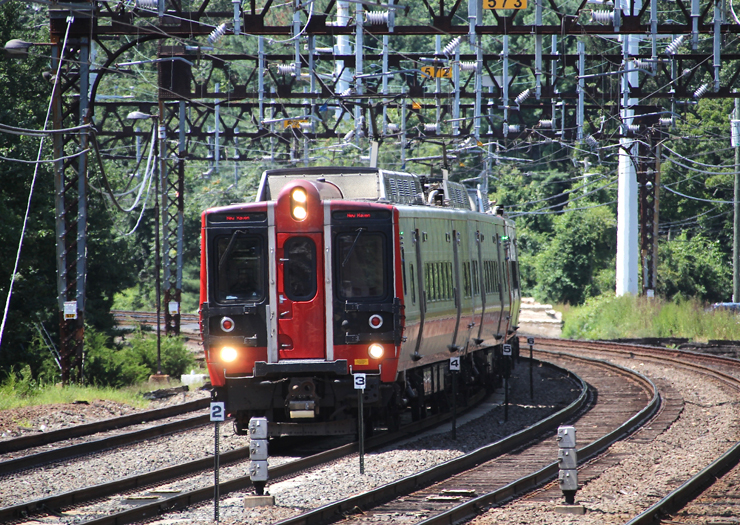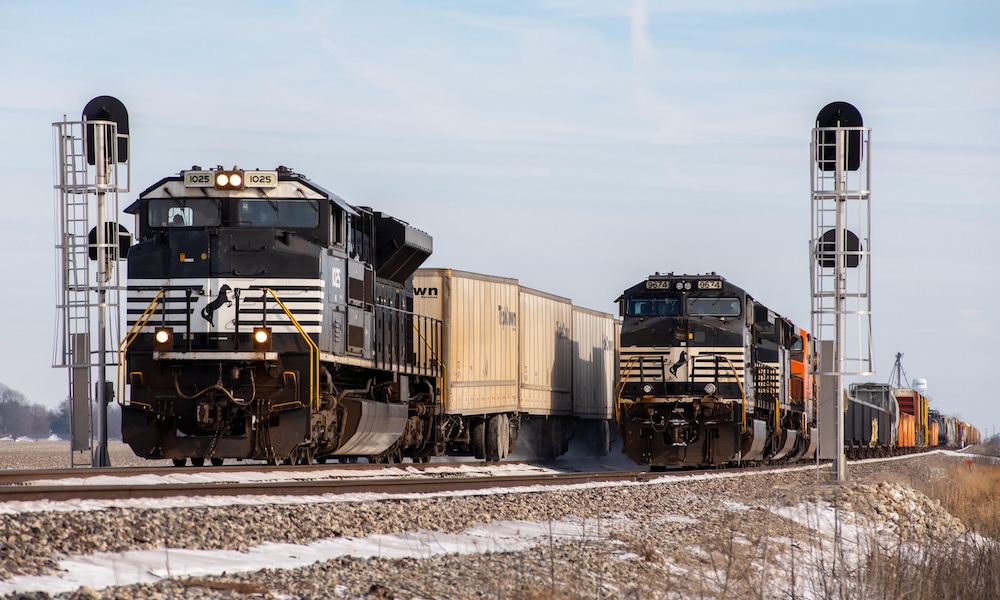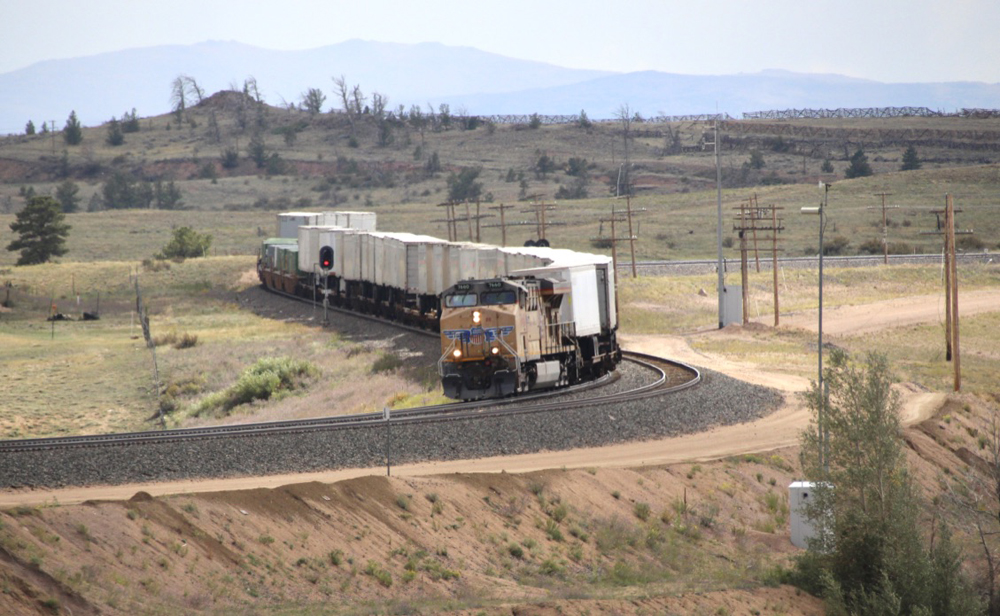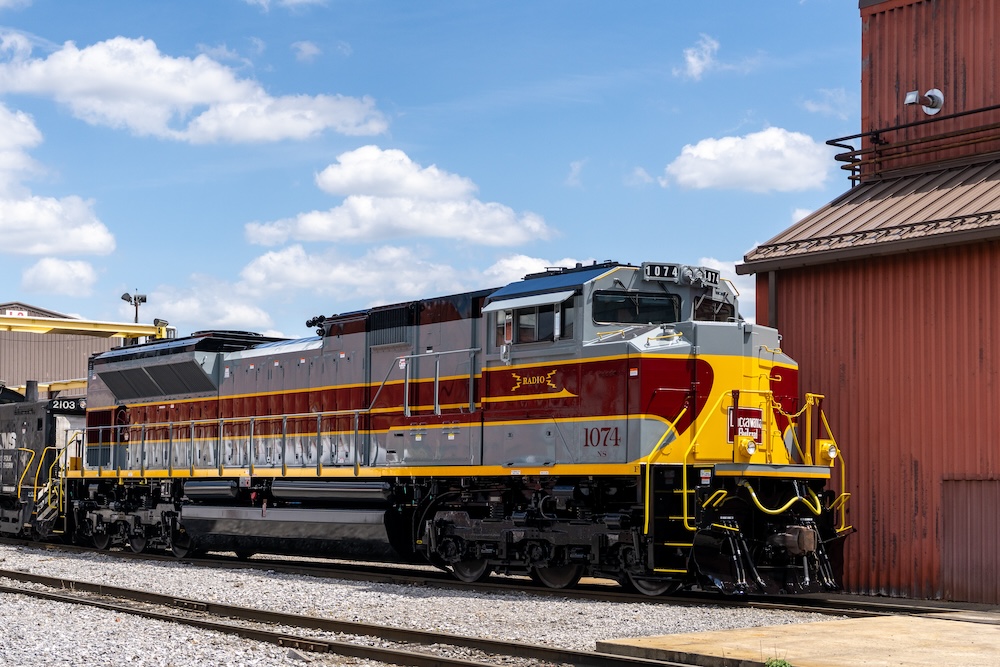The name Hiawatha, a character from the epic Henry Wadsworth Longfellow poem, was selected. Hiawatha, as some of you may recall from grade school, was “fleet of foot.” The Milwaukee Road train was even “fleeter.”
The Milwaukee Road turned for help to the American Locomotive Co., which reviewed the project and guaranteed design, manufacture, and delivery on the railroad’s tight schedule.Alco delivered locomotives nos. 1 and 2 in 1935, 3 in 1936, and 4 in 1937.
The railroad’s Milwaukee shops produced 50 matching passenger cars.
Once the locomotives were delivered, they were tested on freight trains, and a 136-mile trial run was made on May 15, 1935. The streamliner made its debut two weeks later, running from Chicago to the Twin Cities beginning May 29, 1935.
The Hiawatha was a smash hit, hauling 1 million people in 40 months and spawning larger steamers (and later diesels) to haul a series of distinctive orange and crimson passenger cars.
Exclusive to subscribers, here is a free color illustration of the Hiawatha locomotive.
The Lionel Atlantic captures the speed-demon look of the prototype. Fresh from the box, the metal shell of the locomotive stands out as flawless in its casting, and the paint work is among the finest that I’ve seen.
At a glance its profile and especially its glossy finish evoke the prewar Lionel Hiawatha, but a notch or three better.
The 4-4-2 Atlantic boasts a heavy dose of realism. Its opening hatches, opening cab doors, and marker lights are all beautifully wrapped in a great color scheme. Mirroring one often-reprinted Milwaukee Road photo, the clamshell nose hinges open wide, revealing a conventional smokebox housed within the shroud.
One aspect of the model that I found mildly disappointing was the large gap between the locomotive cab and the tender. Also, I also didn’t care for how high the tender rides above the trucks.
The gap between the squared-off rear of the locomotive cab and tender looks pretty significant. The prototype’s gap was 18 inches, which was filled by a screen or diaphragm that was extended during operation (to help the appearance of streamlining). The model’s gap works out to about 28 inches in O scale. This is the price to pay for being able to negotiate O-54 curves.
The tender, when viewed dead on from the side, appears to ride higher on its trucks than any of the prototype photos of the Hiawatha that I’ve seen.
The prototype tender trucks rode closely to the bottom of the tender frame. Viewed from the side, the lead three-axle tender truck had virtually no “see-through,” while the rear two-axle truck showed a bit more “air space.”
On the model, the gap between the lead truck and the bottom of the model tender is about ¼ inch, or about one scale foot. This could have been better concealed if Lionel had duplicated some of the undercarriage piping detail.
Given its $1,100 list price, is the Lionel Hiawatha a fully developed scale model? Well, as the saying goes, it’s close enough for government work.
Subscribers can download a free PDF of a color drawing of the Milwaukee Road A-class Atlantic by going to classictoytrains.com and clicking on “News.” Then click on “New toy trains & more.”
Exclusive to subscribers, check out a video of the Hiawatha locomotive and passenger cars running on our roller base and test track.
On the test track
The Atlantic requires O-54 or larger curves. Stating the obvious, the wider the curve, the better this model looks running through it.
The locomotive and tender (excluding the rear knuckle coupler) measure 88 feet in O scale (22 inches long), a smidge less than the prototype, which measured 88 feet 7 inches long.
The model features Lionel’s TrainMaster Command Control, Odyssey speed control, and RailSounds 5.0 systems. Command functions perform well, and the sound system is terrific.
Operating with the four-car set in command-control mode on a home layout, performance was smooth.
The train was responsive and sure-footed on all grades and through all of the layout’s curves.
Pulling its relatively large Hiawatha passenger car set, the locomotive had a higher starting speed than expected, but it was not beyond the norm for O gauge locomotives.
All wasn’t as rosy in conventional-control mode. With Odyssey speed control engaged, throttle response was sluggish. Just about every time I started running the locomotive, there was a noticeable jerk as the locomotive attempted to catch up with the throttle setting.
Also in conventional-control mode, the smoke unit didn’t produce any smoke, although I could smell warm smoke fluid after a few minutes of running. I gave the locomotive a goose with the CAB-1 in command-control mode, and the higher voltage was enough to turn the smoke fluid into a vapor and then out the stack.
Drawbar pull for the locomotive was 3 pounds 1 ounce. Our low-speed average was 6.4 scale mph, while the high-speed average was 69.2 scale mph.
When running at moderate or higher speeds, the locomotive had a noticeable wobble as it rolled down the track.
The new Lionel Hiawatha is a beautiful locomotive. Not only that, but the sound system is admirable and the motor performance in command-control mode is noteworthy.
It’s difficult at times to separate this 21st century scale model from images of Lionel’s toy train Hiawatha of the 1930s. The original Lionel Hiawatha was a groundbreaking model, and it takes a lot of pull for this new model, even after 70 years, to emerge from the shadow of the original. On the shelf or tinplate track, the Hiawatha is great.
Price: $1,099.99 (no. 38094)
Features: O-54 operation, can-style motor, Lionel RailSounds, TrainMaster and Odyssey systems, coil coupler on tender
Pros: Graceful styling, terrific sound package
Cons: Noticeable wobble when running; gaps between locomotive and tender, and beneath tender
Made in the People’s Republic of China for Lionel LLC















I'm with Ike from New Jersey I have 5 Lionel TMCC engines and I only run one with the smoke unit on because the smoke fluid is every were but in the unit. I don't care if I put 2 drops or 5 drops it comes out of the bottom of my engines. You thing that the price you pay for these engines that Lionel would put a better smoke unit in there engines.
nice loco sounds great!
I couldn't agree more with Ike and Robert. Lionel installed a new smoke unit in my B&M Mogul under warranty; it smoked fine for a while, but is back to a non smoker. I heard that MTH smoke units have been installed in Lionel locos. If anyone knows someone that can do this, please let me know! In the meantime, I'll be an MTH customer.
this loco and the cars impress as everything one would expect a Lionel Train set to be . Those that have this set should be thrilled to own it,
why doesn't lionel design a new smoke system for its locos? the lack of smoke on lionel's products seems to be very common, unfortunately.